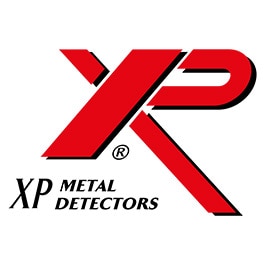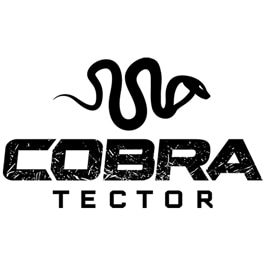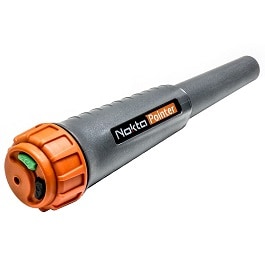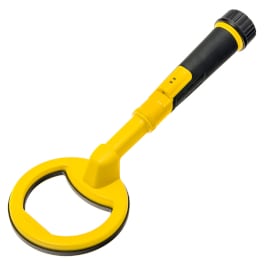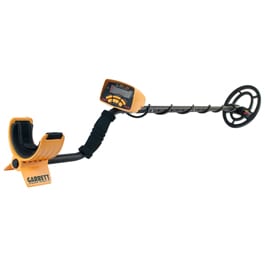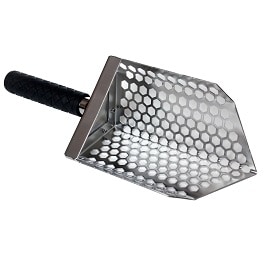- Home Page
- Metal detectors
Professional Metal Detectors
Creating an account has many benefits:
- See order and shipping status
- Track order history
- Check out faster
- Operating modes Yes Remove This Item
- Bargains Bestseller Remove This Item
 Blackdog 33x33 cm Searchcoil for Quest X5, X10, Q20, Q40 Metal DetectorsShipping: Immediately
Blackdog 33x33 cm Searchcoil for Quest X5, X10, Q20, Q40 Metal DetectorsShipping: ImmediatelyMetal detectors, also known as magnetic anomaly detectors, are devices that utilise the phenomenon of electromotive force due to an alternating magnetic field, or electromagnetic induction. This phenomenon was discovered by English physicist Michael Faraday in 1831 and is also used on a large scale in generators, alternators, power plants, induction motors, coils and gauges. A metal detector is used to check the ground or the interior of objects for the presence of metal. Specialised devices of this type are used to detect for carrying metal objects at airports, police stations and prisons. Detectors are also used at special gates in parliament buildings and courts, as well as at airports - these are so-called static detectors. For quick searches, professional, small-sized handheld detectors are used.
One of the first designers to undertake the creation of such a device was Alexander Graham Bell, a Scottish scientist, inventor, speech therapist and music teacher by profession. He created the first detector in 1881, in order to locate a bullet in the body of James Garfield, who was wounded during the assassination of the President of the United States. The operation to locate the bullet ended in failure. As it later turned out, the detector was functional, but its work was effectively disturbed by the metal springs of the mattress on which the president was resting. The first commercial production did not occur until 1925, when Gerhard Fischer obtained a patent for portable devices of this type. This was the beginning of the era of modern metal detectors. Among the most important uses of detectors was mine detection. In the winter of 1941-1942, Józef Kosacki, along with Andrzej Graboś, designed the first Polish mine detector while serving in the Polish Armed Forces in the West.
A typical handheld metal detector has a structure consisting of a coil, a cable, a shaft, an electronics box and a handle. The coil is the working element, which, when set parallel to the area being searched, operates below the surface of the ground. It is worth mentioning that only when set in motion does it begin to do its job, so lateral movements over the searched area are necessary during operation. The shaft is most often similar in design to a crutch, but being usually lighter and slightly more delicate, since it is not designed to support our weight. It is adjustable so that the size of the whole device can be adapted for a comfortable search. The electronics box is the heart of the metal detector. This is where the special screen and buttons with which we operate the device are located. The interface usually has a few buttons for sound adjustment, an on/off switch and other functions. The handle provides comfortable operation and allows to rest an arm. Lightweight and properly adapted to one’s height, the detector ensures trouble-free operation for many hours. The most important applications of modern devices of this type, in addition to the detection of unexploded ordnance, include archaeological research, detection of wires and installations, as well as hobby use. If you are interested in metal detectors, it is worth taking a look at the products offered in this category. When buying a new device, it's worth getting an additional shovel for digging in the ground, such as the popular spade shovel. Digger knives are also available to help overcome difficulties encountered in the ground, such as roots.
Another type of metal detector is the so-called searcher or pin-pointer. This is a smaller, handheld device, which is used to search for a find, a dug hole or a piece of ground. This is an extremely helpful device, especially when searching for small items. Some full-size metal detectors have a built-in pin-pointer, as one of the integral features. Regardless of the selected model, it is a good idea to familiarise oneself with the current laws in the country where it is desired to use the detector. Searching for objects is a wonderful hobby that develops our knowledge of geology, history and geography. It is worth giving such a device on special occasions to a loved one or to yourself. MILITARY.EU offers models from American manufacturers, such as Garrett and Quest, and Turkish manufacturers, such as the Nokta brand. You can also find detectors from the British brand C. Scope. Feel free to take a look at our offer.





